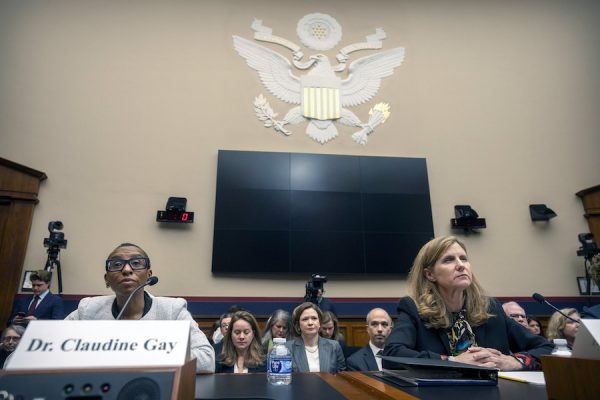For the past 30 years, redistricting in Texas has provided great theater. As the state has gone from one-party Democratic to a Republican stronghold to renewed stirrings of bipartisan competition, the controlling party has exploited the decennial line drawing to lock in gains. And just as certainly, the courts have provided refuge for those on the outs.
The Supreme Court has recognized the problem on a national scale but has been unable to see a solution. The justices have failed to find an easy definition of what is fair, what level of manipulation is permissible, how much greed is tolerable, how many districts should be assigned to this group or that group.
Unfortunately our democracy has done little to bring order to the self-serving spectacle of political insiders trying to cement their advantage, the voters be damned. Fifty years ago the Supreme Court decreed that it would strike down unequal population in districts, but other than translating that into a one-person, one-vote requirement, the Court has done little else. We are told that gerrymandering offends the Constitution, but that nothing can be done about it.
So, following the logic of going where the getting might be good, litigants have learned that partisan grievances only get traction if adorned in the inflammatory garb of racial claims.
Of course, race and politics are difficult to separate. The polarization of the parties nationally yields a heavily minority Democratic party and an overwhelmingly white Republican party. The richest partisan gains follow the lines of race and ethnicity.
Which brings us to the current Texas showdown. Since the last redistricting a decade ago, the state gained nearly four million residents, mostly the result of surges in the minority population. In turn, Texas received an additional four congressional districts. As a general rule, states more easily distribute population gains than losses. But with a divided Congress, every seat has become part of the national battleground. With Republicans in control of the Texas Legislature, the state was carved up to create four districts that they would likely control. So, off to litigation we go, where the story becomes inordinately complicated.
Texas is a “covered jurisdiction” under Section 5 of the Voting Rights Act which means that it cannot put its plan into effect unless it is “precleared” by either the Department of Justice or a special three-judge court in Washington, D.C. This year, for the first time since the VRA was passed in 1965, the Justice Department is headed by Democrats at the time of redistricting. Texas decided to try the D.C. court instead, and the state is now about to go to trial to prove that the new plan is not discriminatory in either its effect or its intent.
Meanwhile, suit was also filed in Texas before a special three-judge federal court claiming that the new plan could not be implemented before it was precleared, that the pre-2010 Census plan on which the lines were based could no longer be used because it failed to account properly for the population of Texas, and that the new plan was in fact discriminatory. That case, too, was scheduled for a quick trial.
In the meantime, some plan had to be in place for the 2012 elections, so the Texas court properly took the reins and then ordered its own plan. The court redrew the state lines, handing a victory to the Democrats, who would now were set to control three of the new seats. That result led to a rushed appeal to the Supreme Court, which last week declared the new plan improper, because it was insufficiently respectful of the state’s redistricting objectives.
As byzantine as this contest may sound, the legal result was more or less in line with prior law. Texas was both prohibited from proceeding with its plan because it had not dispelled the presumption of discrimination, and yet entitled to have courts defer to its policy objectives in redistricting. The real difficulty was to come.
Why do we allow self-serving manipulation by insiders in politics when we strive to constrain it in all other walks of public life?
In order to create a new plan, the Supreme Court held, the Texas court would have to be deferential only to the extent that the state’s objectives were presumptively legitimate. That in turn would require an investigation in Texas into the motives behind the new plan and an assessment of its impact on minority voters. All this will happen quickly, and the Republican gain from the Supreme Court victory may well evaporate in the process.
From the judicial perspective, this is chaos. There are now two three-judge courts—one in Texas, one in D.C.—heading into trial on the same issues in rapid succession. Each court will likely hear the same evidence and, even if there is agreement on the Texas state plan, the resulting waste and disorder calls out for change.
Debate on the VRA tends to focus on whether the intrusion into state processes continues to pass constitutional scrutiny, but this is not the root of the problem. Race is still a defining issue, but Texas history shows that race and politics form a combustible mix in redistricting. It proved to be in the 1980s, when a Republican effort to gerrymander Democrat Martin Frost out of his Dallas-area district was struck down as racially discriminatory by Democratic-leaning judges—even though the challenged districting increased minority representation. So it was again in the 1990s, when a Democratic plan that gave all three new seats to minorities was challenged under the VRA by Republicans in Texas and in the Department of Justice. (I helped represent the state of Texas in that round of litigation.) Then in the 2000s, after multiple efforts, the DeLay gerrymander passed despite Democratic legislators fleeing from the state to stop legislative business by preventing a quorum. A disbelieving Supreme Court finally had to resort to the VRA to find that a contorted district running from Austin to the Mexican border was offensive. The reason was not that it was designed to remove Democrat Lloyd Doggett from Congress, but, oddly, that the plan was thought to unite a Hispanic population of the Austin suburbs with insufficiently culturally aligned brethren from the border valley.
At bottom, all the legal constraints from the Constitution and the VRA seek to establish some baseline concept of a just system of political representation. The core difficulty is that all of these constraints are stacked atop a system that privileges insiders trying to manipulate outcomes to their advantage. What if we step back a bit and ask why the Texas legislature, or any legislature, should be able to redistrict in a way that determines whether districts are Republican or Democratic? Why do we allow self-serving manipulation by insiders in politics when we strive to constrain it in all other walks of public life?
Unfortunately the apparent precision of one-person, one-vote set off a decades-long search for similar indicia of exactitude in the definition of fair representation. Minority voting- rights cases turned into dreary comparisons of statistics on voting patterns of blacks and whites. Lost was the concern about exclusion, about whether parties vied for the support of all voters, whether elections were actually competitive so that it mattered how groups of voters cast their ballots. Even the fundamental question under Section 5 of the VRA—whether any of the minority voting gains in the South were being threatened by discrimination—was reduced to the “Beer non-retrogression standard,” so named not for blacks and whites mingling at a local tavern but for a long-forgotten case that basically held that if there were three black representatives one year, there needed to be three the next.
By contrast, partisan gerrymandering—or its more ominous cousin, the incumbent-protecting deals of the bipartisan gerrymander—could yield no such precision. Social scientists labored for years on mathematical formulae of varying complexity that would be as compelling as one-person, one-vote. A bevy of statistical tests were proposed, all designed to convince increasingly skeptical courts that equations could guide them to an understanding of what is meant by political fairness.
Texas shows that asking the wrong question yields no good answer. So long as the question is how many seats Republican insiders should give to Democratic and Hispanic outsiders, the answer will produce an ugly legal mess. The solution lies in taking the process of redistricting away from the insiders—as does every democracy in the world that has to draw district lines. When the question is posed in states with ballot initiatives, the wisdom of moving to independent redistricting bodies is obvious. Voters in California and Arizona did not waste their opportunities to take redistricting out of the hands of politicians.
In the meantime, the Texas court will redraw the plans again, probably to the satisfaction of neither party. The Supreme Court will hear the case again, though likely not before the 2012 elections. And once the new Texas legislature assumes office in 2013, we will begin the process of re-redisticting Texas. Then the litigation will start all over again.








